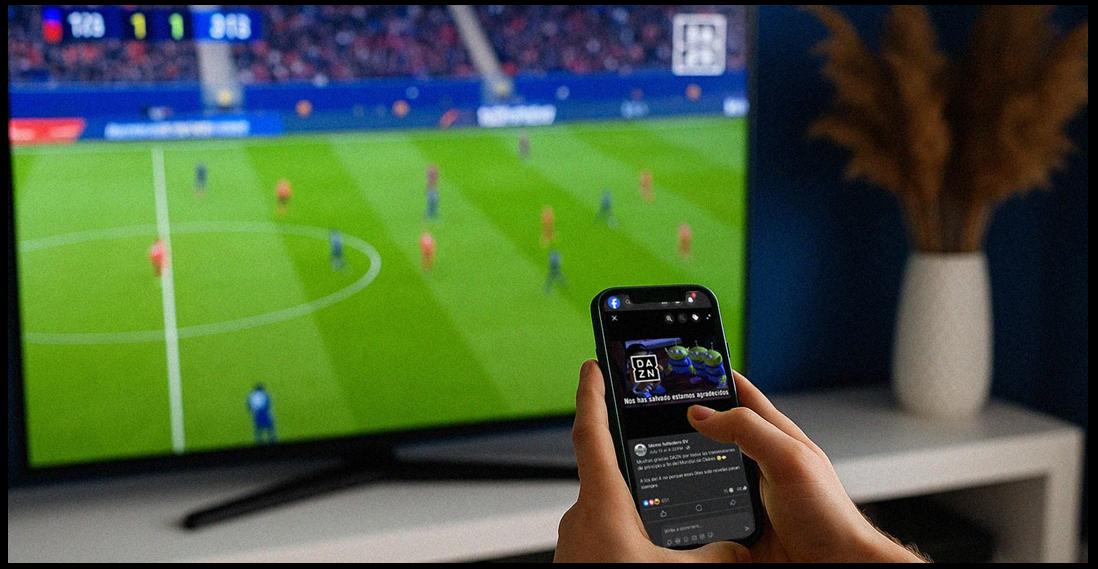




Os espaços onde as pessoas se expressam, compartilham e constroem identidade não são vitrines — são ecossistemas culturais, onde a linguagem, os códigos e a dinâmica são importantes.
Aqui, os fãs não se limitam a observar — eles participam. Eles constroem. Eles se tornam partes ativas dos universos que amam. É por isso que, quando uma marca realmente toca esse acorde emocional, com respeito e autenticidade, ela não apenas ganha visibilidade; ela conquista lealdade. E quando algo realmente se conecta aqui, isso se torna uma conversa. Tendência. Ritual

A entrada não é com um logotipo gigante, mas com gestos que falam sua língua, respeitam seus códigos e agregam valor real aos seus rituais. É sobre colaborar, não colonizar. Encontrar uma forma de a marca contribuir sem roubar os holofotes, de se conectar sem fingir pertencer. Trata-se de aprimorar um fandom que já está construído, não de tentar liderá-lo

Hoje, marcas sem grandes orçamentos para influenciadores estão descobrindo o poder dos microinfluenciadores — criadores de conteúdo com públicos menores, mas altamente engajados. Os microinfluenciadores tendem a gerar um engajamento significativamente maior do que os perfis em grande escala. Estudos recentes mostram que microinfluenciadores (normalmente entre 1.000 e 100.000 seguidores) podem atingir taxas médias de engajamento próximas a 7%. Isso representa até 60% mais engajamento do que influenciadores maiores, graças à confiança e à proximidade que eles mantêm com o público. Uma campanha bem executada com um perfil de 100 mil seguidores pode gerar melhores resultados do que um investimento de um milhão de dólares focado no alcance sem uma conexão genuína.
Em países como Perú, México, Guatemala e Equador, as marcas estão conquistando a confiança do público apostando em conteúdo autêntico e vozes reais. Em uma época em que o público ignora os anúncios tradicionais e busca relacionamentos honestos com as marcas, os microinfluenciadores estão reescrevendo o livro de regras de marketing. As marcas que entendem essa mudança estão alcançando o que muitos consideram o “santo graal” digital: permanecer relevantes, converter sem ser insistente e construir uma comunidade por meio da proximidade.
Em um cenário saturado de anúncios e mensagens, os microinfluenciadores se tornaram as vozes mais confiáveis e identificáveis. Com comunidades que variam de 1.000 a pouco mais de 100.000 seguidores, eles alcançam um equilíbrio poderoso: alcance suficiente para criar impacto e uma conexão profunda e autêntica com seus seguidores.
Ao contrário das celebridades de renome, seu conteúdo não parece um anúncio pago, mas sim uma recomendação genuína. Eles são especialistas no assunto, conversam com seus seguidores e compartilham experiências vividas, fazendo com que suas postagens pareçam conselhos confiáveis de um amigo. A parceria com microinfluenciadores permite que as marcas se integrem naturalmente à vida das pessoas, de dentro das comunidades, com conteúdo que inspira confiança, afinidade e relacionabilidade.
Agora, vamos ver como essa fórmula já está produzindo resultados reais em países como Perú, México, Equador e Guatemala.
O conteúdo que realmente funciona é do tipo que parece real: não filtrado, improvisado e nascido de momentos cotidianos com os quais o público pode se identificar. Marcas que entendem isso criaram campanhas memoráveis adotando o simples, mas poderoso.
Veja criadores como Christydinatali, Chocochifle.show e Alisson.gonzaleezz, que usam humor irônico e um estilo pessoal inconfundível para oferecer perspectivas nítidas e simples. Sem grandes orçamentos de produção, eles responderam de forma autêntica e pessoal a campanhas como “Los chanchos vuelan” do Burger King, em que a marca lançou seu novo sanduíche Bondiola King por meio de entrega por drone. O resultado: comentários reais e alto engajamento. Sem celebridades, apenas microinfluenciadores compartilhando seu amor por carne de porco e grelhados.
Outro caso de destaque foi a campanha “Temporada de Inverno” da Tottus. Em vez de modelos tradicionais, a marca escolheu microinfluenciadores para mostrar sua nova linha de roupas. O conteúdo parecia tão real e acessível que se tornou viral organicamente, gerando uma onda de vídeos gerados por usuários exibindo orgulhosamente suas roupas. O impacto foi além do engajamento — ele se traduziu em vendas.

Na verdade, no primeiro trimestre de 2025, uma plataforma de marketing de influenciadores conectou 716 microinfluenciadores a várias marcas, gerando mais de 342 milhões de impressões, 34 milhões de curtidas e 459.000 compartilhamentos. Marcas como Tottus, BCP e Kotex obtiveram ganhos notáveis em visibilidade, tráfego e conversão digital graças a essas colaborações.
Visão principal: No Perú, a autenticidade gera uma conexão real. Quando as marcas adotam conteúdo não filtrado e trabalham com microinfluenciadores, elas não alcançam apenas as pessoas — elas conquistam sua confiança. O que é cotidiano, espontâneo e genuíno permanece por mais tempo na mente e no coração das pessoas. Porque aqui, o que é produzido pode chamar a atenção, mas o que é real desperta emoção. E essa emoção é o que converte.
O conteúdo que realmente ressoa combina relacionabilidade, humor e profundo pertencimento cultural. E se há algo que cativa o público latino-americano, é uma anedota bem contada: aquelas histórias cotidianas que não parecem conteúdo de marca, mas, nas mãos certas, incorporam produtos perfeitamente sem se sentirem forçadas.
Um exemplo de destaque é Carlos Zacu, um microinfluenciador em ascensão que conquistou milhares com sua narrativa crua e bem-humorada. Ele se baseia em experiências pessoais, momentos difíceis e anedotas relacionáveis. Ele não tem medo de rir de si mesmo ou emocionar seu público com verdades vulneráveis. Graças à sua autenticidade, marcas como CeraVe, Garnier
México, Dove Men e LaLiga confiaram nele para alcançar novos públicos. Seu trabalho não é apenas conteúdo — é uma comunidade construída a partir do coração.

Em eventos recentes, como a Copa América e o Grammy Latino de 2024, a TelevisaUnivision ativou 16 influenciadores — a maioria microinfluenciadores — para campanhas que alcançaram 41,6 milhões de visualizações de vídeo e 3 milhões de interações, gerando um ROI estimado de 4 para 1 e um custo médio de apenas $0,0045 por visualização.
Visão principal: No México, contar histórias emocionantes enraizadas na identidade e no humor locais é a ponte mais forte entre a marca e o público. Não se trata apenas de contar uma história — trata-se de contá-la como um amigo faria: com cordialidade, inteligência e honestidade. Quando o conteúdo parece familiar e faz parte da vida diária, a conexão não é apenas estabelecida — ela se torna inesquecível. Microinfluenciadores, eles não alcançam apenas pessoas, mas conquistam sua confiança. O que é cotidiano, espontâneo e genuíno permanece por mais tempo na mente e no coração das pessoas. Porque aqui, o que é produzido pode chamar a atenção, mas o que é real desperta emoção. E essa emoção é o que converte.
Na Guatemala, encontramos uma comunidade diversificada de microinfluenciadores que se destacam por seu conteúdo autêntico e identificável, com raízes locais profundas.
O que realmente conecta aqui é o que parece real, de receitas tradicionais caseiras a histórias honestas de empreendedorismo, contadas sem filtros ou enfeites.
Os microcriadores guatemaltecos entendem que o verdadeiro valor está em mostrar a vida como ela é — e é isso que torna seu impacto tão poderoso. Um excelente exemplo é Pao Sánchez, que conquistou uma sólida audiência latino-americana graças ao seu estilo de vida genuíno e espontâneo. É exatamente esse conteúdo da vida real, baseado em rotinas diárias, tom identificável e experiência vivida, que atraiu marcas como Banco Cuscatlán, Remington, Pandora e Warner Bros, que reconhecem sua capacidade de transformar produtos naturalmente em conteúdo que realmente ressoa.

Outra história de sucesso local envolveu uma marca de bebidas orgânicas que entrou na Guatemala, El Salvador e Costa Rica por meio de mais de 150 microcriadores, gerando mais de 350 postagens não pagas no Instagram e garantindo espaço nas prateleiras e giro de produtos sem publicidade paga.
Visão principal: Na Guatemala, a autenticidade não é uma estratégia, é uma forma de contar a vida. O conteúdo que ressoa não tenta impressionar, mas sim conectar. E quando uma história parece honesta, ela se torna uma conversa.
No Equador, os microinfluenciadores descobriram uma verdade fundamental: insights locais valem ouro. Os momentos em que todos vivemos, mas poucos sabem narrar, são os que criam uma conexão real.
Em um país tão diverso, o conteúdo que permanece é do tipo que mistura autenticidade, humor e vida cotidiana. Esses criadores não precisam de grandes produções. Com um telefone e muita verdade, eles nos fazem rir, refletir e compartilhar. Eles usam a linguagem das ruas, da família e da vizinhança para contar histórias que todos reconhecem.
Um ótimo exemplo é Josh Paredes, um microinfluenciador em ascensão que construiu uma comunidade forte usando roteiros curtos e cenários cotidianos equatorianos e latino-americanos. Graças a essa abordagem orgânica e identificável, marcas como KFC, DFSK (automotiva), Etafashion (varejo) e Supermercados Akí agora confiam em seu conteúdo para se conectar de forma autêntica.

Visão principal: no Equador, o conteúdo mais impactante é aquele que parece ter sido feito por “um de nós”. Quanto mais real, mais forte é o vínculo, porque aqui a confiança não é conquistada com o valor da produção, mas com a verdade.
No Equador, microinfluenciadores com 5.000 a 20.000 seguidores têm uma média de 1,28% de engajamento no Instagram, enquanto aqueles com 1.000 a 5.000 podem alcançar cerca de 3,5%. Quanto menor o público, maior a taxa de interação, provando mais uma vez que a autenticidade supera a escala.
Comece observando e ouvindo: identifique aqueles que já estão falando sobre sua marca organicamente e analise que tipo de conteúdo realmente se conecta com suas comunidades. Não se trata de números grandes, mas de fortes afinidades. Em seguida, defina os valores, as emoções e as mensagens que você deseja transmitir e faça parcerias com microinfluenciadores que reflitam essa mesma essência.
O segredo é construir relacionamentos genuínos, não impor roteiros. Seja claro sobre seus objetivos, mas deixe espaço para que o criador traga sua voz, estilo e autenticidade. Pense neles como parceiros criativos, não apenas canais de publicidade. E, acima de tudo, amplie seu conteúdo em suas plataformas. Isso lhes dá visibilidade, fortalece o vínculo e mostra à sua comunidade que eles são parte ativa da história da sua marca.
Lembre-se: 44% dos profissionais de marketing já preferem trabalhar com microinfluenciadores por causa de seu alto engajamento e eficiência de custos.
A América Latina não é apenas um mercado — é uma comunidade diversificada, apaixonada e motivada por conexões. Aqui, os microinfluenciadores não são apenas mensageiros — eles fazem parte da vizinhança, fazem parte da conversa diária.
Sua autenticidade, relacionabilidade e poder de recomendação os tornam aliados essenciais para marcas que buscam ir além da publicidade tradicional. Na verdade, um estudo da Nielsen descobriu que 92% dos consumidores confiam nas recomendações de indivíduos mais do que nas próprias marcas.
Na Positive Agency, entendemos que cada país tem seus próprios códigos, idiomas e referências culturais. É por isso que não oferecemos uma fórmula única para todos — trazemos a sensibilidade cultural necessária para realmente nos conectarmos.
Se você está pronto para falar com públicos reais por meio de vozes autênticas, estamos prontos para criar isso com você. Vamos dar vida a essa história.
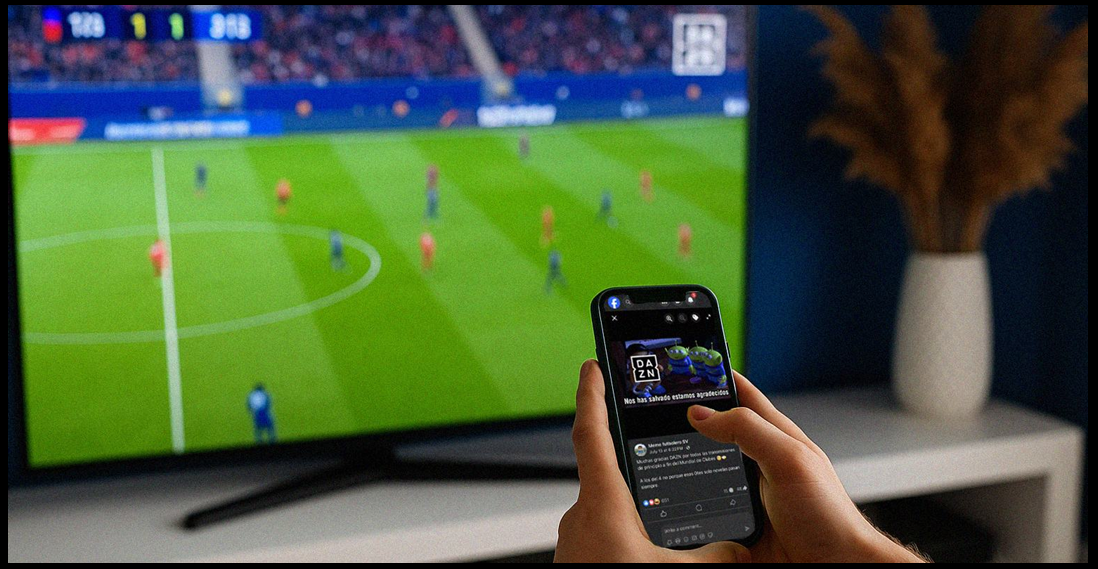
Bueeee, pessoal! Então, como foi a Primeira Copa do Mundo de Clubes? Bem, foi o melhor possível, especialmente para a criação de conteúdo na América Latina.
Como é possível que um torneio ao qual ninguém prestou atenção no início tenha se tornado um dos eventos mais assistidos do mundo e uma plataforma fundamental para a criação de conteúdo na região?
Para descobrir, mergulharemos nos memes, nas transmissões, nos vídeos e em tudo o que essa conversa global de alto impacto deixou para trás — e descobriremos os insights que mostram como os esportes e os negócios digitais andam de mãos dadas.
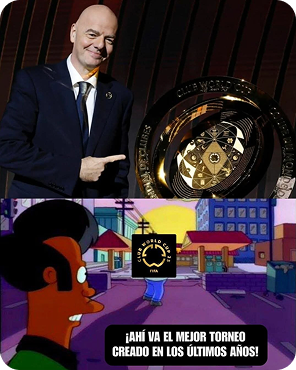
Para começar a entender o impacto que essa Copa do Mundo de Clubes teve no ecossistema digital, precisamos dar uma olhada na DAZN — a emissora que apostou em uma estratégia digital inovadora que revolucionou a forma como o torneio foi consumido na América Latina.
A plataforma transmitiu todas as partidas ao vivo gratuitamente, rompendo com o modelo tradicional de pay-per-view. Essa jogada ousada não apenas facilitou o acompanhamento da competição por milhões de fãs, mas também removeu as barreiras de acesso.
Foi exatamente essa cobertura que desencadeou o que poderia ser considerado o primeiro grande tópico de conversa do torneio.
Uma história que rapidamente se transformou em uma fonte de memes, vídeos e engajamento em tempo real. Vamos observar como uma conversa pode ser capitalizada nas mídias sociais.

No meio da partida entre Porto e Fluminense, Lola e Marc começaram a trocar opiniões sobre o jogo — algumas das quais pareciam um pouco fora de contexto. Os elogios mútuos que trocaram ao vivo foram a faísca que desencadeou uma divertida conversa online, com muitos alegando que havia um flerte acontecendo entre o comentarista argentino e o ex-jogador de futebol hispano-mexicano.
A onda de memes, tweets, vídeos e reações se tornou uma oportunidade imbatível para o DAZN e para os próprios comentaristas, que aproveitaram a onda de popularidade para apresentar uma imagem mais identificável e amigável às mídias sociais durante as transmissões.
Tradução:
Um sucesso total em termos de audiência de DAZN e de conteúdo viral — uma brilhante jogada em tempo real de Lola e Marc e uma resposta elegante para aqueles que acreditam que o futebol só deve ser consumido por meio de análises sérias e análises táticas.
Se há uma coisa em que nós latinos somos ótimos, é descobrir o lado engraçado de tudo — e saber como lidar com isso, especialmente nas mídias sociais.
Gols, comemorações, comentaristas ou memes — também havia criadores especializados que viam o esporte de um ângulo diferente, mais alinhado aos negócios.
Um exemplo claro disso é o canal do YouTube “El Negocio del Fútbol”, que se concentrou em analisar o impacto econômico da próxima edição da Copa do Mundo de Clubes.
Outros criadores, como “A Cobra , ” Charlie Carrillo , e os Danigoals se tornaram amplificadores de tudo o que acontece durante o torneio, desde os resultados das partidas e classificações dos jogadores até as previsões para cada nova rodada. Foi uma prova absoluta do poder de atração que o futebol tem na América Latina e da grande variedade de formatos de conteúdo que ele inspira, desde humor e análises econômicas até conteúdo de estilo de vida.
Além dos comentaristas oficiais, influenciadores e criadores de conteúdo da América Latina tiveram um papel de liderança na amplificação da experiência da Copa do Mundo de Clubes no ecossistema digital.
Se há uma coisa em que nós latinos somos ótimos, é descobrir o lado engraçado de tudo — e saber como lidar com isso, especialmente nas mídias sociais.
Por exemplo, o streamer argentino Davoo Xeneize, conhecido por sua paixão pelo Boca Juniors (xeneize), organizou festas de observação, reações ao vivo e análises de partidas em seus canais no Kick, YouTube e outras plataformas. Com mais de 2 milhões de inscritos no YouTube, Davio atraiu dezenas de milhares de fãs para assistir às partidas ao vivo com ele.
Todo esse panorama nos mostra que a América Latina é um dos maiores, mais apaixonados e mais comprometidos mercados de futebol do mundo. O caso do DAZN deixou claro:
Quando conteúdo relevante e acessível é oferecido, o público latino responde massivamente, criando memes, demonstrando apreço e impulsionando a viralidade. Com um idioma compartilhado e um rápido crescimento em todas as plataformas, o que começa em um país pode se tornar viral em toda a região.
Mais de 9,2 milhões de pessoas assistiram à transmissão em espanhol somente nos EUA. 2,49 milhões assistiram a partidas em estádios nos EUA; Brasil, Argentina e México lideraram a compra de ingressos estrangeiros. E muitas tendências globais começam aqui. Investir na América Latina significa ganhar alcance, fidelidade e uma cultura que transforma conteúdo em comunidade.
A pegada digital da Copa do Mundo de Clubes de 2025 na América Latina mostra como essa região transforma momentos fugazes em narrativas duradouras, muito além do apito final. Adotar essa mentalidade permite que as marcas se conectem de forma mais autêntica com o público latino-americano e garantam que sua mensagem ressoe por muito tempo após o término do evento.
Muitas marcas esportivas aproveitaram seu alcance — por exemplo, a Adidas Argentina e a Amstel patrocinaram conteúdo com Lola del Carril devido à sua crescente popularidade, enquanto outros patrocinadores convidaram streamers para criar conteúdo durante o torneio.
Essa colaboração entre marcas e criadores impulsionou a distribuição de conteúdo nas mídias sociais, transformando notícias e momentos do Mundial de Clubes em tópicos virais que se espalharam por todos os cantos da internet na América Latina.
No final das contas, a conversa digital do torneio não era mais dominada apenas pelas contas oficiais da FIFA ou pela mídia tradicional — ela foi co-criada por uma grande comunidade de contadores de histórias digitais que trouxeram a paixão pelo futebol para o Twitter, TikTok, Instagram, YouTube e Kick simultaneamente.

Está ficando cada vez mais difícil surpreender alguém com o que vemos nas redes sociais. Felizmente, ainda existem técnicas que quebram os moldes — como a colagem.
Seja estática, animada ou misturada com objetos físicos, a mídia de colagem e mixagem está renascendo nas plataformas sociais impulsionadas pela Geração Z.
Estamos falando de um estilo visual de contar histórias que combina ilustração, material de arquivo, objetos da vida real e animação, transformando-se em pequenos filmes conhecidos como colagens de vídeo, intervenções analógicas em um mundo digitalizado ou uma combinação de vários elementos que chamam a atenção e se destacam em um feed saturado.
Vamos examinar mais de perto o impacto de uma técnica que antes parecia reservada para editoriais ou arte contemporânea — e agora está pronta para ser usada no conteúdo da marca.
Estamos vendo cada vez mais campanhas que parecem ter surgido da mesma mensagem, o que pode ser uma curva normal no processo de adaptação da indústria criativa à IA. (Lembra quando houve uma época em que todas as marcas publicavam basicamente as mesmas coisas nas redes sociais?).
Em meio a esse debate, a colagem surge como uma alternativa. Com sua natureza imperfeita, ele traz de volta o toque humano, os detalhes artesanais e a beleza do caos.
Cada peça é única, não replicável. E nesses tempos de saturação digital, parece uma lufada de ar fresco.
A América Latina não é exceção ao crescente interesse por técnicas alternativas. Cada vez mais criadores estão levando o recorte, a colagem e a digitalização muito a sério, não apenas como um hobby, mas como uma nova linguagem visual.
Aqui estão alguns dos nomes que vale a pena seguir:
Você consegue imaginar uma campanha em que o produto não flutua sobre um fundo branco, mas se torna parte de uma cena artesanal, construída com papel, linhas e recortes que entram e saem da moldura? Ou uma bobina em que, em vez de gráficos em movimento genéricos, há uma pequena história feita à mão?
Esse tipo de conteúdo pode:
Conecte-se com o público cansado de “mais do mesmo”.
Uma coisa que adoramos nessa técnica é que ela força uma etapa anterior que faz toda a diferença: a analógica. E isso é fundamental. Antes de qualquer coisa ser renderizada, os criadores brincam com papel, tecido, revistas, argila de modelar e tesouras. Esse processo físico dá à peça um tipo de alma que o digital simplesmente não consegue replicar.
Na Positive, podemos ajudá-lo a:
De acordo com isso Artigo do LinkedIn, nos próximos anos, haverá uma tendência crescente de valorizar o conteúdo feito pelo homem em detrimento da produção artificial.
Não se trata de cortar e colar só por causa disso. Trata-se de contar histórias de forma diferente. Porque em um mundo em que tudo começa a parecer igual, ousar juntar as coisas de uma nova maneira pode ser exatamente o que sua marca precisa.
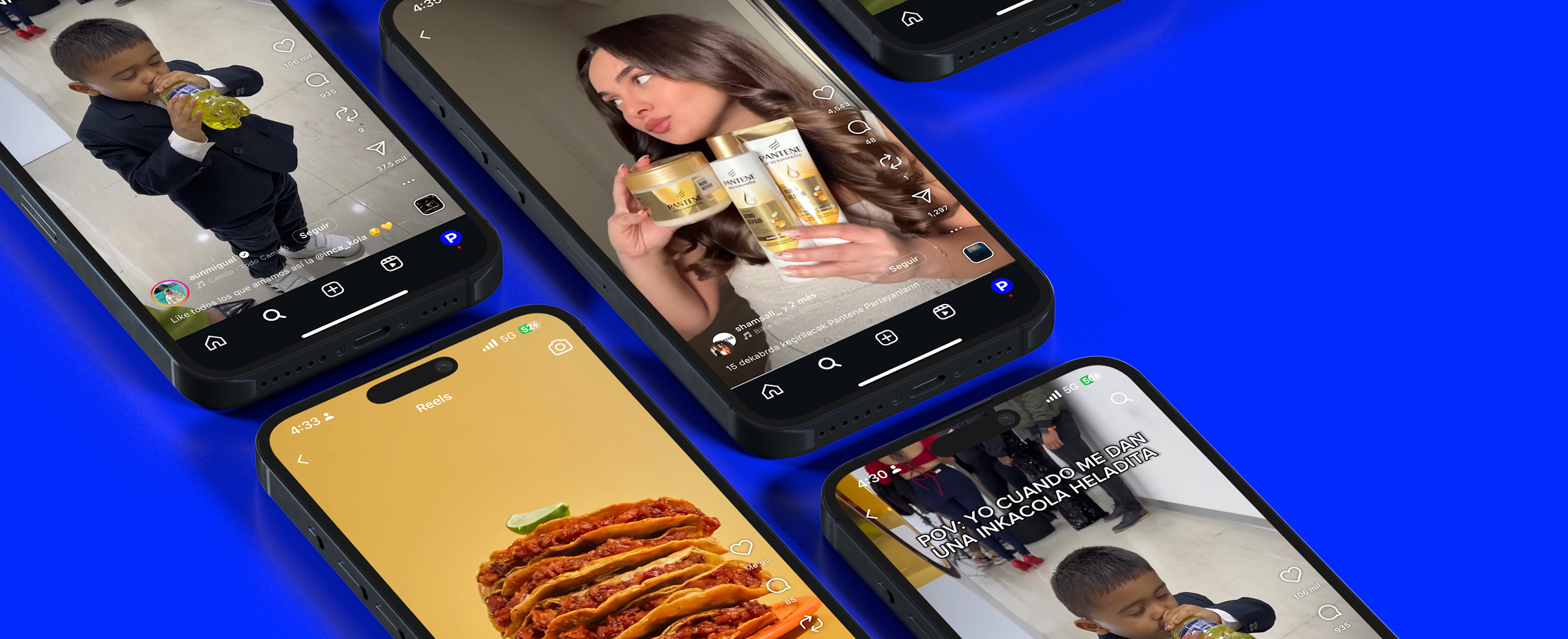
It All Started as Gossip and Turned into a Trend.
In Latin America, we always say gossip isn’t really our thing... but come on! We can’t help but smile when someone starts with the classic, “Did you hear?” or when a friend leans in quietly to say: “I’ve got chismecito.”
The same thing happens in the digital world. One day, you find yourself debating, laughing, and sharing memes about someone who appeared in a viral video... someone you probably barely know.
Some say it’s not UGC (User generated content) at all, but rather IGC (Influencer generated content) or disguised CGC (Creator generated content); others argue we simply don’t understand it here. And that’s when we realized that, in this region, many brands still don’t have it clear—and that puts them at a disadvantage.
UGC stands for User Generated Content: content created by regular, everyday users—not paid or pressured by brands—born from a genuine experience.
Think of it this way: when a customer uploads a photo or writes a comment without any payment involved, that’s authentic UGC.
According to Wikipedia, this type of content has allowed consumers to move from being passive participants to becoming active contributors on digital platforms.
Furthermore, “user-generated content influences the purchases of 79% of consumers, and 92% trust peer recommendations more than branded content.”
This proves that without a clear understanding of UGC, we risk losing the authentic touch that truly drives people to act.
While in the U.S. and Europe many brands already include it as a key part of their business strategy, in Latin America the idea still lingers that a proper UGC execution is simply “I’ll send you one of my products so you can post something,” overlooking one of the most important promotional vehicles for generating awareness on digital channels.
Whether due to a lack of knowledge from the brands themselves or a lack of guidance from their agencies, the creative process for developing a UGC campaign often lacks clear KPIs, variety in entry hooks, proper editing by the agency, optimization of formats for media placement, or even the basic understanding that a UGC creator should know if their content will be boosted or not, and for how long.
As @mila_posada points out in this video:
In Latin America, only 37.7% trust sponsored posts, a figure that aligns closely with Europe andthe U.S., where the average is around 35%–39%, according to this data from Single Rain.
In contrast, well-executed UGC —the kind that feels like it came from an everyday person— has far greater power to connect than an influencer with all the production resources at their disposal.
On the other hand, according to a global report, the UGC marketing market is expected to grow from USD 6.7 billionin 2024 to USD 132.7 billion in 2034, with a CAGR of 34.8%.
This is a clear sign that our region is still not in sync with what’s coming.
Here’s the big problem: many people call anything “UGC” if it’s a video with good editing, nice lighting, and camera flair, when in reality it’s paid branded content or disguised influencer work. It’s not that these productions are bad or less effective, but they lead to some serious misunderstandings:
This video of @yuyo.says can actually help us understand the communication differences between one and the other.
These acronyms are everywhere, but it’s important to keep them straight:
According to Territory Influence: "UGC thrives on authenticity and community, while IGCl everages the influence and creativity of people with an established online presence."
So, how should these differences be addressed in a campaign led by a marketing agency? This video by @theinexpert explains it:
These acronyms are everywhere, but it’s important to keep them straight:
At Positive, we not only understand the differences between UGC, IGC, and CGC, but we also apply them in a structured way within every campaign. This allows us to design strategies where each type of content fulfills its exact function, boosting authenticity and maximizing results. This way, we help international brands land organically in the Latin market, connecting with audiences through the language, codes, and culture that truly move them.
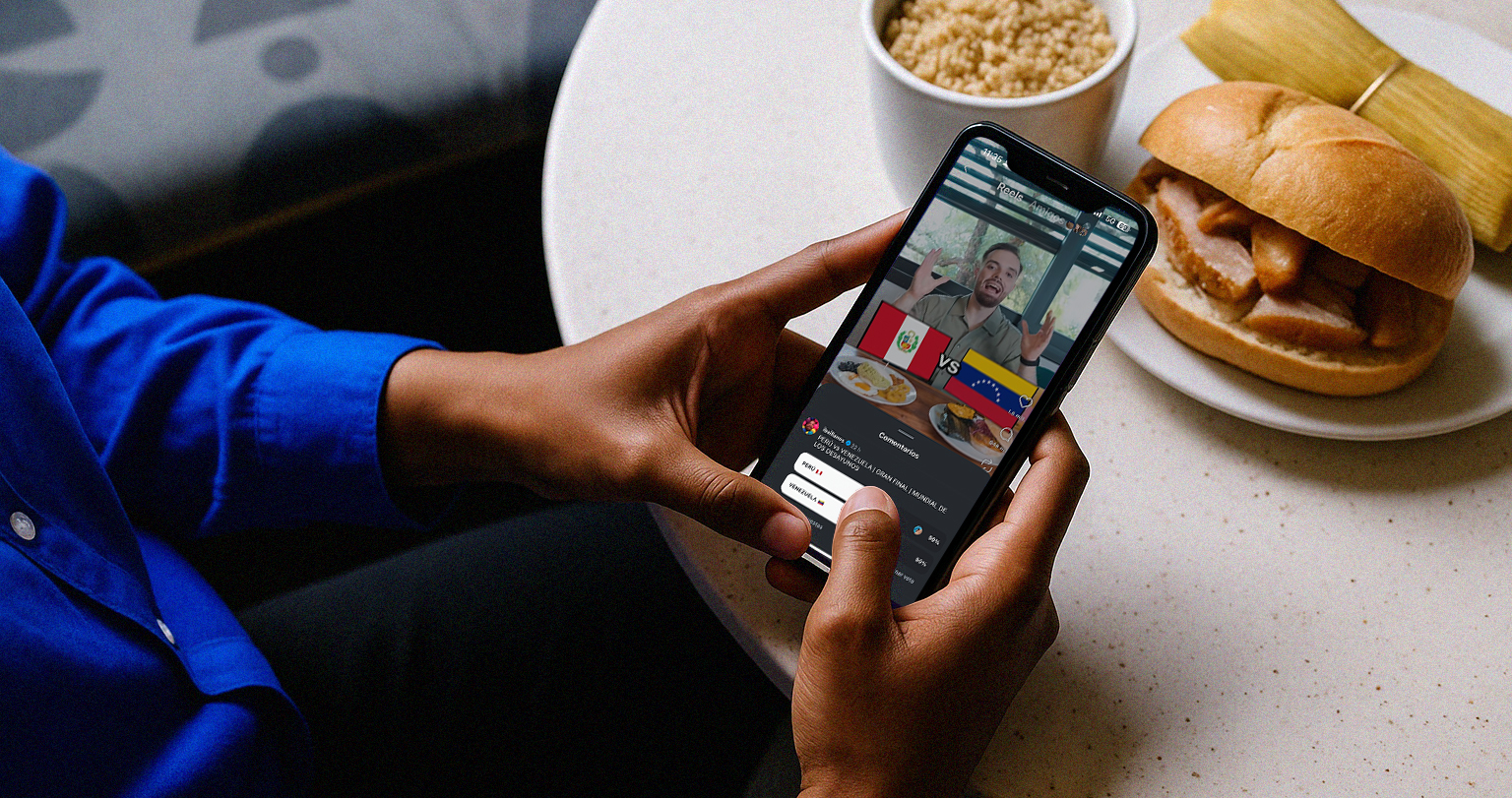
Peru is key! You see it in every post, every viral meme, and every achievement making noise around the world—from gastronomy to video games. What started as a TikTok joke has become a shout of national pride, and the visit of U.S. streamer IShowSpeed to Lima proved it: he not only hung out with local influencers, he was even named “mayor for two hours” and pulled off an acrobatic jump from the municipal balcony that went viral. From that moment on, media outlets and online communities echoed the phrase with force:
saying “Peru is key” is no longer just a meme—it’s the way to shout “Long live Perú!” to the world.
Have you voted for the pan con chicharrón yet? Hurry up, the final is almost here!
It’s the shout echoing everywhere: on social media, in the news, and even in the streets—no matter the brand or industry.
Peru ’s digital boom has been fueled by viral moments like the “Peru is key” meme, IShowSpeed’s visit, and above all, Ibai Llanos’ Breakfast World Cup. In this online tournament, Perú crushed it with over 8.1 million votes for its pan con chicharrón and tamal, beating Ecuador and going global. The hype was so big that politicians, media, and local brands jumped in, while Gamarra—the country’s biggest clothing hub—even launched custom T-shirts about the contest. This event didn’t just spark citizen excitement, it also cemented Peruvian gastronomy as a true nation-brand icon online, showing its massive pulling power and international reach.
Because Peru doesn’t just have the world’s best restaurant... it probably has the best too!
Your child settles onto your lap, you light the fireplace, your eyes grow misty, and you begin to tell the story. If Peru once was key to the world, now it’s key to the entire digital universe. The gamer boom also carries a Peruvian face: in August 2025, the team Perú Unite made history by becoming champions of the Pokémon UNITE World Championships in California—making them the first Latin American team to ever lift the world trophy after defeating the Japanese favorites, Zeta Division, 3-1. “I mean, we beat the creators of the game.
The achievement of these five young Peruvians was celebrated as a source of national pride and recognized by international outlets like Infobae and Yahoo News, which highlighted how they “conquered the World Championship... securing the franchise’s most important trophy for the South American nation.
The phrase “Peru is key” went viral once again, as the tournament brought together more than 25,000 live attendees in Anaheim and reached nearly 1.1 million unique online viewers, with peaks of 185,000 simultaneous streams, cementing Peru’s presence before the eyes of the world.
The team itself thanked the support from home, reinforcing the idea that Peruvian talent transcends borders and that Spanish-speaking audiences deeply value their local champions. And beyond the sport, this victory ignited marketing as well: brands tied to gaming—hardware, telecommunications, energy drinks, and more—found in Peru a passionate and growing niche. Combined with other milestones like gaming tournaments, massive streams, and viral phenomena, this triumph positions Peru firmly on the global digital map, proving that its online culture is not just fleeting virality, but the consolidation of communities—gamers, foodies, streamer fans—driven by a uniquely Latin American passion.


What makes Peru’s digital ecosystem unique isn’t just virality, but the combination of three forces: creativity, community, and speed. Peruvian creativity shows up in memes, trends, and narratives that stand out in an ocean of global content. Community amplifies those ideas with overwhelming energy—from young people spontaneously launching digital campaigns to local brands cleverly joining the conversation. And then there’s speed: within hours, a meme born on TikTok can trend on X, Facebook, and even reach traditional media. This trio explains why phenomena like “Peru is key”, the Breakfast World Cup, or the Pokémon UNITE championship win are not isolated events but symptoms of a larger pattern: Perú has become a cultural accelerator for the region. For global brands, this means that any action in this market doesn’t just make waves locally—it has the potential to scale across all of Latin America.
Your child settles onto your lap, you light the fireplace, your eyes grow misty, and you begin to tell the story. If Peru once was key to the world, now it’s key to the entire digital universe. The gamer boom also carries a Peruvian face: in August 2025, the team Perú Unite made history by becoming champions of the Pokémon UNITE World Championships in California—making them the first Latin American team to ever lift the world trophy after defeating the Japanese favorites, Zeta Division, 3-1. “I mean, we beat the creators of the game.
The achievement of these five young Peruvians was celebrated as a source of national pride and recognized by international outlets like Infobae and Yahoo News, which highlighted how they “conquered the World Championship... securing the franchise’s most important trophy for the South American nation.
The phrase “Peru is key” went viral once again, as the tournament brought together more than 25,000 live attendees in Anaheim and reached nearly 1.1 million unique online viewers, with peaks of 185,000 simultaneous streams, cementing Peru’s presence before the eyes of the world.
The team itself thanked the support from home, reinforcing the idea that Peruvian talent transcends borders and that Spanish-speaking audiences deeply value their local champions. And beyond the sport, this victory ignited marketing as well: brands tied to gaming—hardware, telecommunications, energy drinks, and more—found in Peru a passionate and growing niche. Combined with other milestones like gaming tournaments, massive streams, and viral phenomena, this triumph positions Perú firmly on the global digital map, proving that its online culture is not just fleeting virality, but the consolidation of communities—gamers, foodies, streamer fans—driven by a uniquely Latin American passion.

Latin America is no longer just an “emerging market.” Today, it’s a cultural and digital laboratory setting global trends. This entire movement has direct consequences for marketing: it shows that Latin America —and Peru in particular— has become a strategic and vibrant market for any global brand seeking relevance, where trends born from memes, gaming tournaments, or viral phenomena quickly spread and spark national pride.
The achievement of these five young Peruvians was celebrated as a source of national pride and recognized by international outlets like Infobae and Yahoo News, which highlighted how they “conquered the World Championship... securing the franchise’s most important trophy for the South American nation.
Joining these movements in real time (as KFC, Bembos, or BCP did with #PeruEsClave and the World Breakfast Cup) allows brands to connect emotionally with young, digital first consumers, who already surpass 70% internet penetration and 90% mobile access in the region.
Moreover, campaigns that reinforce local identities (such as pan con chicharrón or Peru Unite) enhance brand-country perception and open opportunities in booming sectors such as e-commerce, fintech, gaming, and entertainment. Sponsorship of events and collaborations with influencers or creators multiply organic reach in an ecosystem where culture —gastronomy, music, sports, memes— acts as an exportable form of soft power, and where authentic engagement can outperform million-dollar campaigns.
In conclusion, Latin America is now a global cultural laboratory, with Peru as its best example, showing that digital not only amplifies narratives but also strengthens passionate communities, turning the region into an unmissable destination for brand innovation and growth.
At Positive, we understand that it’s not enough to simply “be on social media”—you need to understand the culture that drives it. Perú and Latin America are fertile ground for brands looking to grow, but they require strategy to avoid going unnoticed. That’s why we identify local insights that become global—such as gastronomic pride or gaming passion—and translate them into campaigns with regional impact and international resonance. Our approach blends creativity with data, combining qualitative analysis of trends, communities, and narratives with quantitative tracking of mentions, engagement, and hashtag growth to design strategies that are both measurable and effective.We know how to authentically place brands within viral phenomena, as many did by joining #PeruEsClave. We act as a bridge between the local and the global, helping brands from the U.S. or Europe connect with Latin American audiences through trust and real engagement. And we do it with close, memorable communication—crafting narratives that move people, spark laughter, invite participation, and turn consumers into fans. In short: Positive helps you ride the digital cultural wave of Latin America so your brand is not just a witness to what’s happening, but a protagonist in the conversations that matter.

It’s a fact! Latin America has become the crown jewel for digital platforms. Every day we see apps and brands choosing the region as their next destination, driven by a young, creative population that makes heavy use of social networks.
With mobile internet penetration at 65% and 413 million active users, and 94.2% of the world’s internet users on social media, it’s no surprise that attention is focused on this side of the planet.
The Latin American audience doesn’t just consume; it also creates and shares trends that later go global. Just look at all the creators, online businesses, viral content and social media celebrities coming out of Mexico, Colombia or Argentina to understand why the Hispanic market is so sought‑after today.
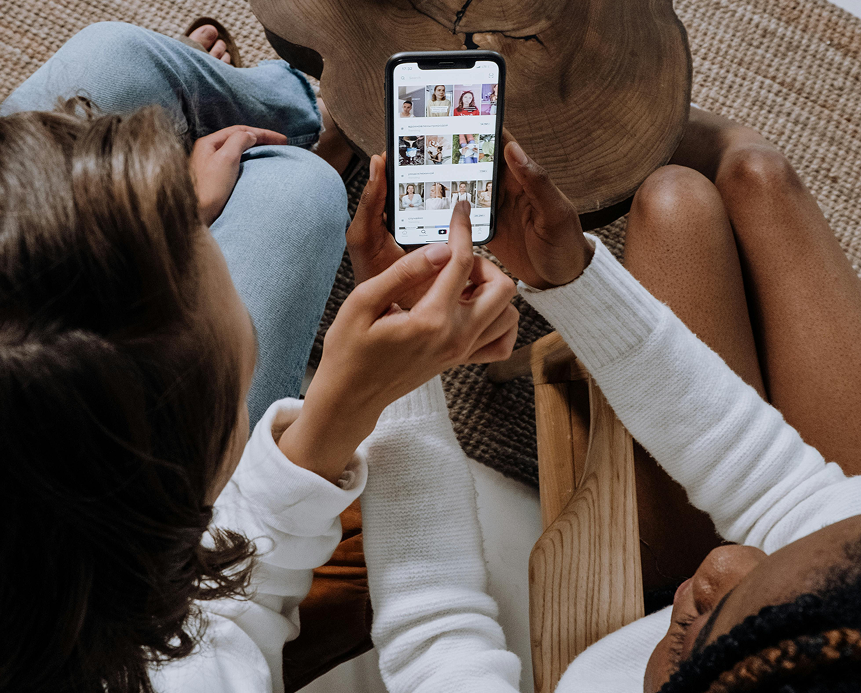
TikTok adds 189.7 million users in Latin America, according to Backlinko, which represents 18.29% of its global base and a 32.2% penetration rate among internet users.
YouTube, meanwhile, has more than 500 million monthly active users in the region. The size and engagement of these audiences are so significant that any company with global ambitions will want a slice of the pie. For content producers, the major barrier has always been language, and that’s where automatic translation begins to play a decisive role.
Why does translation become essential? Simple: because most Latin Americans do not speak English.
In Argentina, only 6.52% of the population has a high level, in Colombia the figure is 4.22%, and in Chile barely 9.53%.
The regional average of English proficiency has stabilized in recent years, according to this article from ef.edu, but it remains low for such a connected region. This means that the majority of the Hispanic audience consumes content in Spanish and that, without translation, it is difficult for a video in English to go viral in Bogotá or Lima. Hence the urgency platforms have to break down these language barriers.
Platforms have taken previous steps. For example, in 2016 Instagram launched its “See Translation button, which converts captions and comments into the user’s language.
Twitter (now X) allows posts to be translated by clicking a link below each message, and Google Translate has long been the best friend of many community managers.
These solutions helped to understand text, but they left out audio and video. Until recently, the voice of a creator remained unchangeable; those who didn’t understand the language were missing half the story.
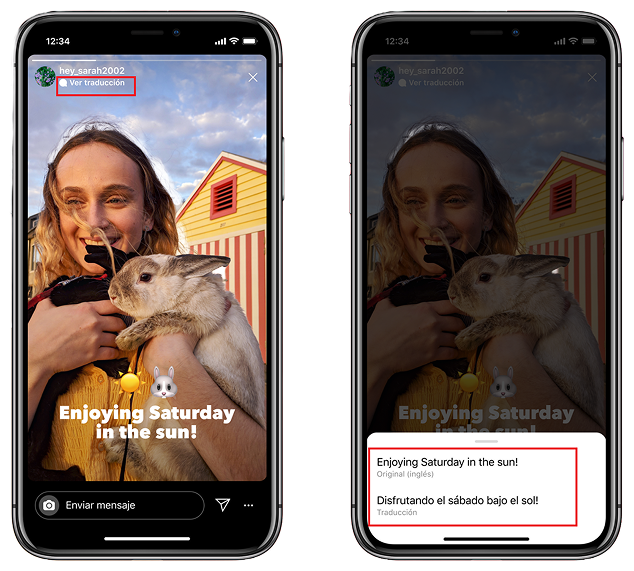
The race to win over the Latin audience isn’t limited to a single app. TikTok and YouTube are the places where people learn recipes, follow tutorials, and discover artists. For any brand, these spaces mean millions of eyes and ears waiting for content that speaks their language.
In light of this, both platforms have made advances in accessibility. TikTok introduced auto captions in 2021 to create automatic subtitles and, in 2022, added translations for captions, descriptions, and stickers. These options appear in the lower left corner of the video and allow a clip recorded in
Mexico City to be understood in Berlin or Seoul. The initial range includes languages such as English, Portuguese, German, Indonesian, Italian, Korean, Mandarin, Spanish, and Turkish, opening the door to a global consumption of Latin content.
Last year YouTube took another step forward: its auto-dubbing feature, launched in December, generates audio tracks in other languages for creators’ videos. The system detects the language, creates dubbed versions that creators can review and delete if they’re not satisfied, and it supports languages like English, French, German, Hindi, Indonesian, Italian, Japanese, Portuguese, and Spanish.
It still sounds a bit robotic, we know, but it reduces the friction of reading subtitles.
The announcement that set this battle on fire came in August 2025. Meta revealed that Instagram Reels and Facebook videos can now be automatically dubbed between English and Spanish, using artificial intelligence that clones the creator’s voice and syncs their lips. According to Adam Mosseri, the goal is to break cultural and linguistic barriers.
The tool lets you activate dubbing at the moment of publishing, review how the audio sounds before sharing, and provides language based stats to know how many views each version receives.
This update can be interpreted in two ways. On one hand, Hispanic influencers will face multiplied competition: any creator in the U.S. or U.K. can automatically appear in Colombian or Peruvian feeds, and algorithms will reward the best content regardless of origin. On the other hand, a brand new route opens for Latin creators: someone in Buenos Aires who never spoke English can now appear on the timeline of someone in Los Angeles with their voice dubbed into English. The language barrier fades and the market expands. It’s no longer enough to just be funny or creative; you’ll have to stand out among thousands of global voices, and as a parcero from Colombia would say, ponerse las pilas with the storytelling.”
Automatic translation is just the first step. Marketing experts remind us that localization and cultural adaptation processes are needed for the message to truly resonate. Localization adjusts content to the idioms and nuances of each country, while transcreation reimagining the idea so that it becomes emotionally relevant creates authentic connections. Without that work, a dubbed video may sound correct but fail to spark empathy; a cuate in Mexico or a pata in Peru will notice when something feel sout of place.
This is where Positive Agency comes in. We are an agency specialized in opening the doors of the Latin American market to brands and companies from other countries.
We understand that translation alone is not enough: you have to adapt the discourse, incorporate local references, and tell stories that connect with your audience’s passions and concerns. If your brand wants to seize the boom of the Latin audience, you need a partner who masters the art of transcreation